Off-the-wall ‘eye baits
Go against the norm and put weary walleyes in the boat
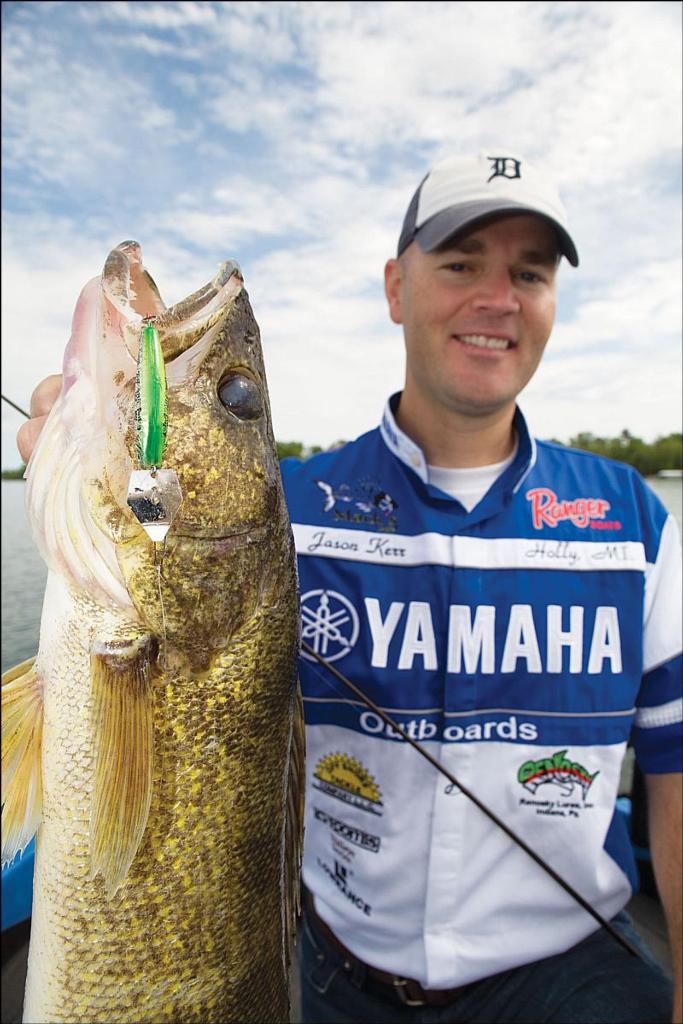
————————————–
Editor’s note: Learn more about FLW Outdoors Magazine and how to subscribe by clicking here.
————————————–
The cameras rolled as waves and wind gently bucked the angler up and down in the chop while he explained the nuances of his new weapons. It wasn’t difficult to explain how pulling different crankbaits than the norm can be effective. However, pro angler Jason Kerr of Holly, Mich., had limited experience trolling the new Z-Man ChatterSticks on Lake Erie.
In short order, though, he caught a nice walleye he guessed was around 7 pounds. Then moments later, he boated another around 5 pounds.
As they filmed the segment for a television show prior to the season-opening tournament of the 2009 Walmart FLW Walleye Tour Presented by Berkley, Kerr noticed their success had trolled them into very muddy water. Not liking the conditions, he decided they should move and set up again in cleaner water. But as he started clearing his rods and planer boards, one board went back hard.
With only a few turns of the reel handle, he quickly realized it was a large fish. Staying calm, Kerr managed to keep the fish mostly out of sight during the fight, even next to the boat. So when he reached down and got it under the gill, the film crew still couldn’t really see what he had. Then he swung the giant walleye aboard.
At first glance he guessed it was “around 10 pounds,” but the film crew insisted it was more. So he put it on the scale – 12 pounds, 2 ounces.
Shocked, he pulled his other walleyes back out of the livewell and realized one of those was easily 10 pounds. That meant he’d caught nearly 28 pounds of walleyes with three bites on a ChatterStick in some pretty dirty water.
“That gave me a lot of confidence going into the event, especially with the muddier water we were facing,” Kerr said.
For the record, Kerr boated two limits weighing more than 30 pounds in the event and posted 94 pounds, 3 ounces for three days.
His success was what trailblazers, tinkerers, mad scientists or other monikers might appropriately describe as an angler looking outside the boundaries of the standard out-of-the-box, run-of-the-mill, no-hassle, no-frills approach to walleye fishing. It’s what the really great anglers know, that staying ahead of the curve often leads to huge catches when other anglers struggle to scratch out a limit.
A lot of recent refinements in walleye fishing were born from input from pros and guides who spend the bulk of their time wishing they had something a little different or a little more. Constant tinkering leads to improvements in presentations, which leads to improved catches for anglers. And catching more is the name of the game. Heavier fish or increased numbers – more is better.
Sure, there are always going to be times when Berkley PowerBait Power Grubs on Lindy jigheads, Northland spinners or Rapala Shad Raps are going to slay the walleyes, but as more anglers pressure fish, the more something totally out of the ordinary will find appeal.
Dr. Keith Jones, the resident expert at Pure Fishing on fish behavior and respected authority in the fishing community, shared his take on walleyes conditioning to certain presentations, colors and actions.
“Bait conditioning is a product of learning,” he said. “Although I have not tested learning in walleyes specifically, learning is inherent in the nervous systems of all fish, so I have no reason to doubt that walleyes learn like any other fish and, hence, are subject to bait conditioning. In bait conditioning, the fish learns to avoid foods that don’t yield positive feeding results and focus on the ones that do.
“The fish learns by associating one or more sensory attributes of the food with the results of trial-by-error feeding experiences. The question is, of which sensory attributes of food do walleyes take heed? Fish can learn through any of their sensory channels, but each species tends to learn best 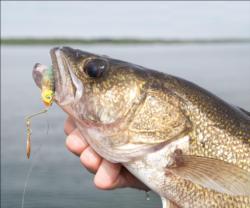 through the sensory channels that dominate its brain.
through the sensory channels that dominate its brain.
“In the case of walleyes, this happens to be their sense of sight, followed by vibration detection. Walleyes learning through hearing, smell, taste and touch, although possible, would be less sophisticated.
“So, do I believe walleyes get conditioned to colors, shapes and actions of baits? Yes, I do. How much they get conditioned depends on what proportion of their feeding trials on a given bait yield negative versus positive consequences and how distinguishable the bait is from the walleyes’ normal repertoire of natural foods. If the bait never or rarely provides positive experiences and is easily distinguishable from natural foods, then bait conditioning will occur quickly.”
Basically, if walleyes see a lot of purple spinners on crawler harnesses and get caught a lot on those baits, eventually they will get conditioned to that color. This would obviously be more prevalent on smaller fisheries with a lot of catch-and-release taking place. And it can also be more prevalent if the lure doesn’t look as natural as some other lures.
But this effect can mean, for a short period, something off the wall can trigger more strikes because the conditioning to that new presentation has not yet been established. For this reason, many anglers will experiment outside the “normal” ways everyone catches walleyes on a certain fishery or during a certain season.
Kerr is among the anglers who spend time at every tournament location and body of water looking for newer, better and even unheard-of ways of catching walleyes. He’s still considered a young man among the salty veterans of the sport, but with two Walmart FLW Walleye League wins and increasing success each year on the tour, Kerr is proving that his outside-the-box thinking pays off.
“I try to utilize any lure I think might improve my overall bite,” Kerr said. “I’ve seen so many articles about tournaments that talk about what baits work on different bodies of water. But in truth, it’s so much more about finding the fish.
“Once I find the active, aggressive fish, there are multiple things that are going to work. And if everyone is pulling Rapala Shad Raps or Reef Runners, then that’s what you’ll hear they are biting on because everyone is fishing the same lures.”
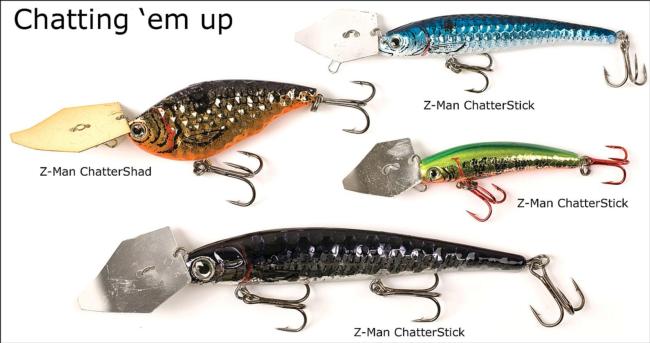
Chatter-style lures
ChatterBaits exploded on the bass scene about three years ago, but the application of the swimming jig didn’t really have a place in walleye fishing. Since that time, though, the Z-Man fishing company has discovered the blade on a ChatterBait could enhance other hard baits as well. They introduced the ChatterStick and the ChatterShad, along with a few other chatter-style lures. The ChatterStick is a long, slender hard bait, and the ChatterShad has a shad-shaped body like a lipless crankbait.
Kerr has experimented more than most with the lures because he got preproduction copies at the 2007 Walmart FLW Walleye Tour Championship presented by Berkley in Cleveland, Ohio, and has been testing their applications ever since.
“Rather than the methodical action of a crankbait, these lures offer a little more,” Kerr said. “They will kick out and dance to one side and then come back to center. It’s sort of like the Storm Hot ‘N Tot with a never-the-same action. Walleyes will locate that erratic action a little easier in dirtier or darker water.”
But like any other lure, there are times when it will outproduce others and times when it will be outproduced by others. Anglers need to experiment to determine the optimal times, but Kerr has learned it’s not season as much as water conditions that determines maximum effectiveness. He basically tries them everywhere he goes to see if the walleyes will react better to the inconsistent wobble under different circumstances.
“The cool thing is you can run these things at ultraslow speeds,” Kerr said. “I can run a ChatterStick or ChatterShad in my spinner spread if I want to mix things up. I run the identical setups for pulling cranks, and the beauty is you don’t have to tune these to get them to run a certain way.”
Swimbaits
Over the years, Kerr has found much off-the-wall success out of pure necessity, including with swimbaits.
“I figured out the swimbait bite fishing around heavy cover on Devils Lake,” he said. “I was throwing crankbaits around the wood and losing those lures at $7 a pop. So I looked for something that would offer that same minnow profile around the wood cover, but maybe not be so costly to hang up.
“I got some laughs when I first broke them out in practice, because they were all catching them on Rapala Shad Raps. But I had a lot of confidence in the lures already, because they reminded me of all the bass I had caught growing up fishing leadheads with paddle-tail grubs.”
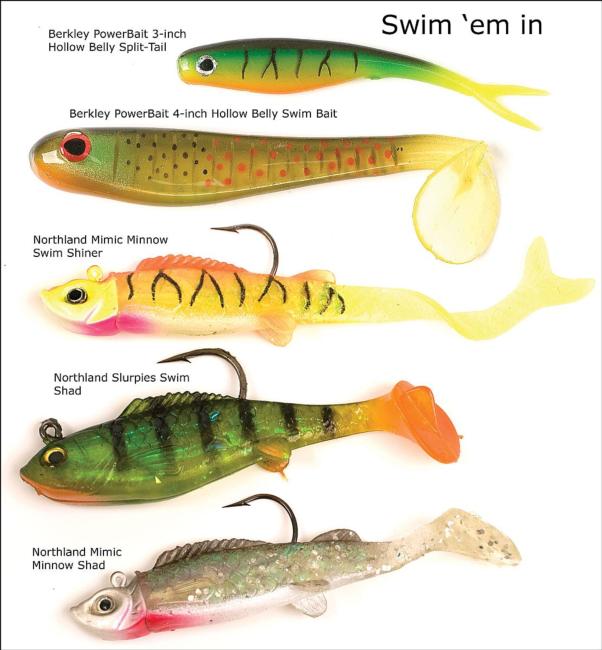 Come tournament time, Kerr outfished his naysayers 5-to-1 with the swimbaits. He finished 28th in that tournament and was just getting the swimbait dialed in before the third day was canceled due to wind. It was an eye-opening experience for Kerr that fueled the idea he should be experimenting more with techniques and presentations in practice.
Come tournament time, Kerr outfished his naysayers 5-to-1 with the swimbaits. He finished 28th in that tournament and was just getting the swimbait dialed in before the third day was canceled due to wind. It was an eye-opening experience for Kerr that fueled the idea he should be experimenting more with techniques and presentations in practice.
He likes a long, 7 1/2-foot spinning rod with a medium action for fishing the small swimbaits around cover. And that rod matched with Berkley FireLine is a great combination for snapping weeds off on long casts.
For the baits themselves, Kerr prefers Northland ¼-ounce swimbaits, which he retrieves at different speeds to target different depths, usually just sticking with a straight cast-and-retrieve presentation.
Spinnerbaits
Prior to tournament fishing, Kerr used to take the skirts off standard bass spinnerbaits and thread some sort of minnow plastic on the hook. The combination caught walleyes, but he never experimented enough with it to gain confidence in it.
Now that he’s proven swimbaits work for him, he’s been experimenting beyond that. He’ll take the safety-pin-type spinners (like you’d commonly find on a Johnson Beetle Spin) and attach one to a Northland swimbait. The result is a walleye spinnerbait Kerr has proven catches walleyes around weeds and wood cover.
In tournaments close to home, Kerr would experiment with spinnerbaits, trying to find a different bite when the masses were catching walleyes on crawler harnesses.
“I would get a lot of fish on a safety-pin spinner attached to a wide-gap worm hook with a Texas-rigged plastic,” Kerr said. “I would upsize my blades to match my crawler harnesses and mix these spinnerbaits into my spread with good results.”
Other oddballs
Kerr applies outside-the-box thinking to all his presentations, regardless of the equipment involved.
Thinking his planer boards could be detractors to walleyes in clear water when running lures high in the water column, he spent time painting the bottom of his planer boards a forest-green color. He even spent the time to figure the angle they rode in the water so he could paint across that plane and have a very visible board above the water and more invisible board below the water.
He has experimented using baitcasters in some of his presentations, like working spinnerbaits around cover. It’s part of a process of examining what a lure or piece of tackle does well and then seeing how he can apply that to the walleye bite.
Realistically, explaining how one angler does this doesn’t help another angler think outside his or her comfort zone. After all, what makes it out of the ordinary is that most others aren’t doing it. The trick is to understand there are unconventional methods to catch walleyes, often with better success than the conventional methods.
Anglers like champion Tommy Skarlis of Waukon, Iowa, are experimenting with Berkley Gulp and PowerBait in otherwise-standard live-bait applications like three-way rigging and slip-bobber fishing with great success.
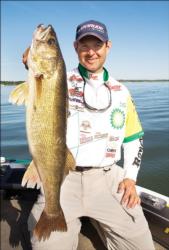
The new Berkley Gulp Alive shapes like the 5-inch Jumbo Leech, 4-inch Minnow and 6-inch Nightcrawler will enable anglers to experiment a little more with traditional live-bait applications without the hassle of storing live bait for a week of fishing.
Meanwhile, BP pro Jason Przekurat of Stevens Point, Wis., has been experimenting with drop-shotting for walleyes, a regular staple among bass anglers.
But all of this just scratches the surface. New applications and techniques are endless as new products are developed and established products cross over from techniques for other fish species. The point of the exercise is to stay out of the rut of never experimenting and stay ahead of the fish and their conditioned feeding patterns. Do that, and the fishing will always be improving.